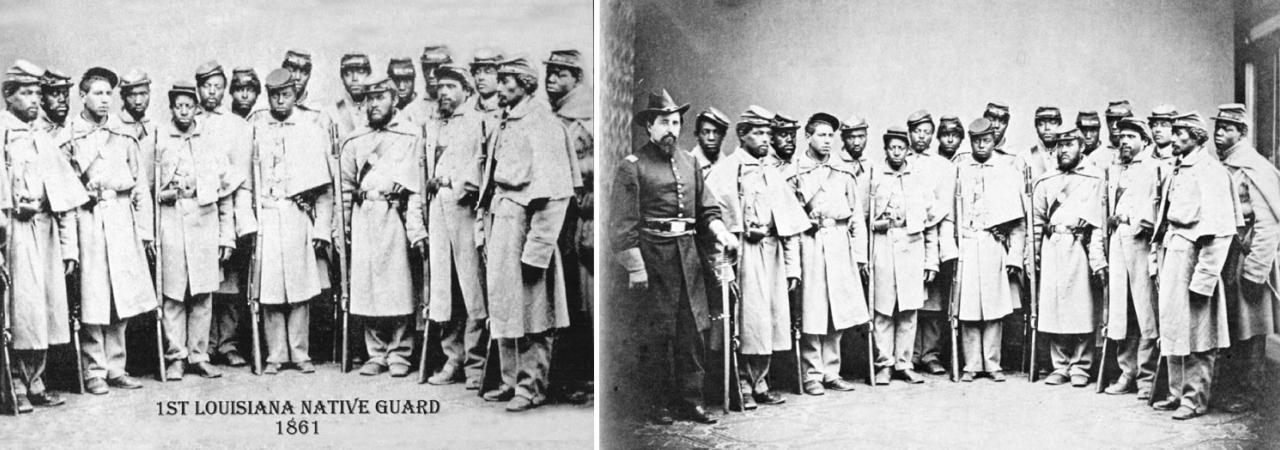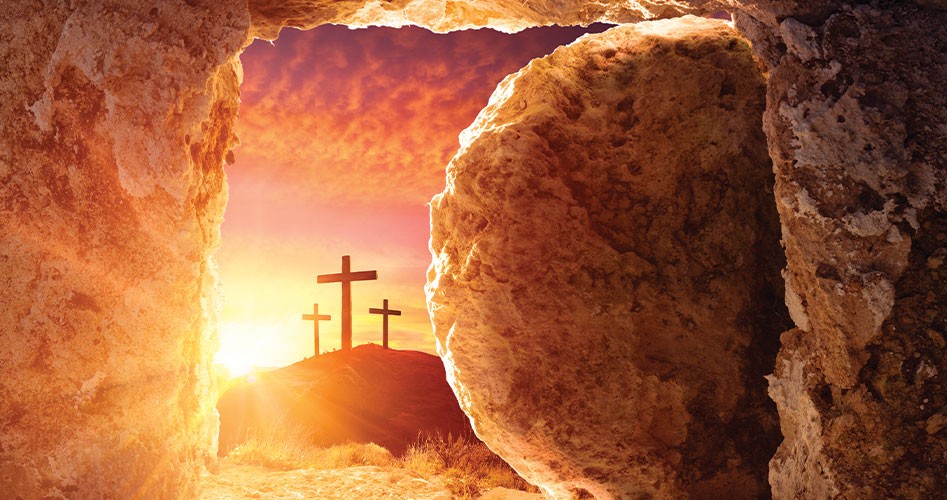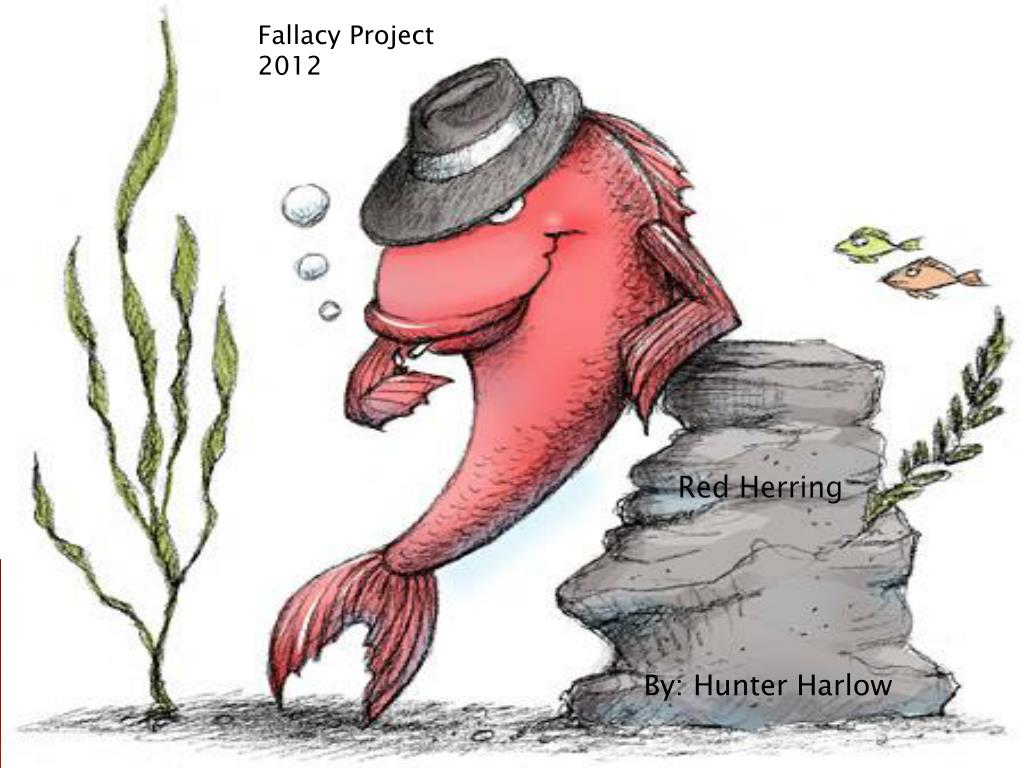Tennessee and Georgia appear to have:
In 1895 a former black Union soldier, Christian A. Fleetwood, who had been a sergeant-major in the 4th U.S. Colored Troops, acknowledged that the South began using blacks as soldiers before the Union did: It seems a little singular that in the tremendous struggle between the States in 1861-1S65, the south should have been the first to take steps toward the enlistment of Negroes. Yet such is the fact. Two weeks after the fall of Fort Sumter, the Charleston Mercury records the passing through Augusta of several companies of the 3rd and 4th Georgia Regt. and of sixteen well-drilled companies and one Negro company from Nashville, Tenn. The Memphis Avalanche and The Memphis Appeal of May 9, 10, and 11, 1861, give notice of the appointment by the "Committee of Safety" of a committee of three persons "to organize a volunteer company composed of our patriotic freemen of color of the city of Memphis, for the service of our common defense."
Louisiana too
A telegram from New Orleans dated November 23, 1S61, notes the review by Gov. Moore of over 28,000 troops, and that one regiment comprised "1,400 colored men." The New Orleans Picayune, referring to a review held February 9, 1862, says: "We must also pay a deserved compliment to the companies of free colored men, all very well drilled and comfortably equipped." (Christian A. Fleetwood, The Negro as a Soldier, Washington, D.C.: Howard University Print, 1895, pp. 5-6, emphasis added)
Texas as well
A Union lieutenant colonel named Parkhurst, who served in the Ninth Michigan Infantry, reported that black Confederate soldiers participated in an attack on his camp:0
The forces attacking my camp were the First Regiment Texas Rangers, a battalion of the First Georgia Rangers . . . and quite a number of Negroes attached to the Texas and Georgia troops, who were armed and equipped, took part in the several engagements with my forces during the day. (Lieutenant Colonel Parkhurst’s Report, Ninth Michigan Infantry, on General Forrest’s Attack at Murfreesboro, Tennessee, July 13, 1862, in Official Records, Series 1, Volume XVI, Part 1, p. 805)
more Tennessee
One of the last Confederate charges of the day included the Fourth Tennessee Calvary, which participated dismounted in the assault. Among the troopers of the regiment were forty African Americans who had been serving as camp servants but who now demanded the right the participate in the last combat of the day. Captain J. B. Briggs gave his permission for them to join his command on the front line. Organized and equipped under Daniel McLemore, the personal servant of the colonel of the regiment, the black troops had collected dropped weapons from battlefields during the regiment’s campaigns. . . . (Steve Cottrell, Civil War in Tennessee, Gretna, Louisiana: Pelican Publishing Company, 2001, p. 94)
South Carolina and Georgia again
Down in Charleston, free blacks . . . declared that “our allegiance is due to South Carolina and in her defense, we will offer up our lives, and all that is dear to us.” Even slaves routinely expressed loyalty to their homeland, thousands serving the Confederate Army faithfully. (Taking A Stand: Portraits from the Southern Secession Movement, Shippensburg, Pennsylvania: White Mane Books, 2000, p. 112)
In the July 1919 issue of The Journal of Negro History, Charles S. Wesley discussed the issue of blacks in the Confederate army:
At the outbreak of the war, an observer in Charleston noted the war-time preparations and called particular attention to “the thousand Negroes who, so far from inclining to insurrections, were grinning from ear to ear at the prospect of shooting the Yankees.” In the same city, one of the daily papers stated in early January that 150 free colored men had offered their services to the Confederate Government, and at Memphis a recruiting office was opened. In June 1861 the Legislature of Tennessee authorized Governor Harris to receive into the state military service all male persons of color between the ages of fifteen and fifty and to provide them with eight dollars a month, clothing, and rations. . . . In the same state, under the command of Confederate officers, marched a procession of several hundred colored men carrying shovels, axes, and blankets. The observer adds, “they were brimful of patriotism, shouting for Jeff Davis and singing war songs.” A paper in Lynchburg, Virginia, commenting on the enlistment of seventy free Negroes to fight for the defense of the State, concluded with “three cheers for the patriotic Negroes of Lynchburg.”
Two weeks after the firing on Fort Sumter, several companies of volunteers of color passed through Augusta, Georgia, on their way to Virginia to engage in actual war. . . .
Virginia
"Negroes in the Confederate Army," Journal of Negro History, Charles Wesle, Vol. 4, #3, [1919,] 244-245 - "Seventy free blacks enlisted in the Confederate Army in Lynchburg, Virginia. Sixteen companies of free men of color marched through Augusta, Georgia on their way to fight in Virginia."
Louisiana again
"The part of Adams' Brigade that the 42nd Indiana was facing were the 'Louisiana Tigers.' This name was given to Colonel Gibson's 13th Louisiana Infantry, which included five companies of 'Avegno Zouaves' who still were wearing their once dashing traditional blue jackets, red caps and red baggy trousers. These five Zouaves companies were made up of Irish, Dutch, Negroes, Spaniards, Mexicans, and Italians." - Noe, Kenneth W., Perryville: This Grand Havoc of Battle. The University of Kentucky Press, Lexington, KY, 2001. [page 270]
Texas and Georgia again
After the action at Missionary Ridge, Commissary Sergeant William F. Ruby forwarded a casualty list written in camp at Ringgold, Georgia about 29 November 1863, to William S. Lingle for publication. Ruby's letter was partially reprinted in the Lafayette Daily Courier for 8 December 1863: "Ruby says among the rebel dead on the [Missionary] Ridge he saw a number of negroes in the Confederate uniform." Federal Official Records, Series I, Vol XVI Part I, pg. 805: "There were also quite a number of negroes attached to the Texas and Georgia troops, who were armed and equipped, and took part in the several engagements with my forces during the day." Federal Official Records Series 1, Volume 15, Part 1, Pages 137-138
Mississippi
April 6, 1865: "The rebels [Forrest] are recruiting negro troops at Enterprise, Miss., and the negroes are all enrolled in the State." Federal Official Records, Series I, Vol. XIV, pg. 24, second paragraph -
Tennessee
In his book, Black Confederates and AfroYankees in Civil War Virginia, Ervin I. Jordan, a black historian, says that in June 1861 Tennessee became the first Confederate State to authorize the use of black soldiers. These soldiers were to be paid $18 a month and be provided with the same rations and clothing as white soldiers. Two regiments, he says, of blacks had appeared by September.
Virginia
“They – the enemy – talked of having 9,000 men. They had 20 pieces of artillery, among which was the Richmond Howitzer battery manned by Negroes. Their wagons numbered sixty. Such is the information which our scouts gained from the people living on the ground where the enemy encamped. Their numbers are probably overrated, but with regard to their artillery, and its being manned in part by Negroes I think the report is probably correct.” Col John W. Phelps 1st Vermont Infantry commanding Aug. 11, 1861. The War of the Rebellion a compilation of official records of Union and Confederate Armies Series I, Vol IV page 569
Tennessee
And more recently the Confederate legislature of Tennessee have passed an act forcing into their military service all male free persons of color between the ages of 15 and 50, or such numbers as may be necessary, who may be sound in body and capable of actual service; and they further enacted that in the event a sufficient number of free persons of color to meet the wants of the state shall not tender their services then the Governor is empowered through the sheriffs of different counties to impress such persons until the required number is obtained. Lt Col William H Ludlow (Agent for exchange of prisoners 73rd New York Volunteer Infantry June 1863) War of the Rebellion a compilation of official records of Union and Confederate Armies Series II, Vol VI page 17
Arkansas
“We are not likely to use one Negro where the Rebels have used a thousand. When I left Arkansas they were still enrolling negroes to fortify the Rebellion.” Major General Samuel R Curtis 2nd Iowa Infantry Sept 29, 1862 The War of the Rebellion a compilation of official records of Union and Confederate Armies Series I, Vol XIII page 688
Florida
“We pursued them closely for 7 miles and captured 4 privates of Goldsby’s company and 3 colored men, mounted and armed, with 7 horses and 5 mules with equipments and 20 Austrian rifles.” Brigadier General Alexander Asboth US Army District of West Florida Aug 1864) War of the Rebellion a compilation of official records of Union and Confederate Armies Series I, Vol 35 page 442
Mississippi
“The Rebels are recruiting negro troops at Enterprise, Mississippi, and the negroes are all enrolled in the state.” Major A.M. Jackson 10th US colored heavy artillery April 1865) War of the Rebellion a compilation of official records of Union and Confederate Armies Series I, Vol 49 page 253
I've read accounts of Alabama allowing it too though I don't have a ready example of specifically Alabama units having Black Confederates. There are also several accounts in which Black Confederates are mentioned but the specific Confederate units they were part of are not mentioned.
The 85th Indiana Volunteer Infantry reported to the Indianapolis Daily Evening Gazette that on 5 March 1863: "During the fight the [artillery] battery in charge of the 85th Indiana [Volunteer Infantry] was attacked by [*in italics*] two rebel negro regiments. [*end italics*]."
In late June 1861, the Illinois Daily State Journal, a staunchly Republican newspaper, reported that the Confederate army was arming some slaves and that in some cases slaves were being organized into military units. Interestingly, the newspaper also said that the North was not fighting to abolish slavery, and that the South was not fighting to protect slavery:
Our mighty armies are gathering for no purpose of abolition. Our enemies are not in arms to protect the peculiar institution [slavery]. . . .
They [the Confederates] are using their Slave property as an instrument of warfare against the Union. Their slaves dig trenches, erect fortifications, and bear arms. Slaves, in some instances, are organized into military companies to fight against the Government. (“Slaves Contraband of War,” Illinois Daily State Journal, June 21, 1861)
A few months before the war ended, a Union soldier named James Miles of the 185th N.Y.V.I. wrote in his diary, “Saw several Negros fighting for those rebels" (Diary entry, January 8, 1865).
Union soldier James G. Bates wrote a letter to his father that was reprinted in an Indiana newspaper in May 1863. In the letter Bates assured his father that there were black Confederate soldiers: I can assure you [his father,] of a certainty, that the rebels have Negro soldiers in their army. One of their best sharp shooters and the boldest of them all here is a Negro. He dug himself a rifle pit last night [16 April 1863] just across the river and has been annoying our pickets opposite him very much to-day. You can see him plain enough with the naked eye, occasionally, to make sure that he is a "wooly-head," and with a spy-glass there is no mistaking him. (Winchester Journal, May 1, 1863)
In a letter published in the Indianapolis Star in December 1861, a Union soldier stated that his unit was attacked by black Confederate soldiers: A body of seven hundred [Confederate] Negro infantry opened fire on our men, wounding two lieutenants and two privates. The wounded men testify positively that they were shot by Negroes, and that not less than seven hundred were present, armed with muskets. This is, indeed a new feature in the war. We have heard of a regiment of [Confederate] Negroes at Manassas, and another at Memphis, and still another at New Orleans, but did not believe it till it came so near home and attacked our men. (Indianapolis Star, December 23, 1861)
In a Union army battle report, General David Stuart complained about the deadly effectiveness of the black Confederate soldiers whom his troops had encountered. The “armed negroes,” he said, did “serious execution upon our men”:
Col. Giles Smith commanded the First Brigade and Col. T. Kilby Smith, Fifty-fourth Ohio, the Fourth. I communicated to these officers General Sherman’s orders and charged Colonel Smith, Fifty-fourth Ohio, specially with the duty of clearing away the road to the crossing and getting it into the best condition for effecting our crossing that he possibly could. The work was vigorously pressed under his immediate supervision and orders, and he devoted himself to it with as much energy and activity as any living man could employ. It had to be prosecuted under the fire of the enemy’s sharpshooters, protected as well as the men might be by our skirmishers on the bank, who were ordered to keep up so vigorous a fire that the enemy should not dare to lift their heads above their rifle-pits; but the enemy, and especially their armed negroes, did dare to rise and fire, and did serious execution upon our men. The casualties in the brigade were 11 killed, 40 wounded, and 4 missing; aggregate, 55. Very respectfully, your obedient servant, D. STUART, Brigadier-General, Commanding. (Report of Brig. Gen. David Stuart, U. S. Army, commanding Fourth Brigade and Second Division, of operations December 26, 1862 - January 3, 1863, in Official Records, Volume XVII, in Two Parts. 1886/1887, Chap. 29, Part I - Reports, pp. 635-636, emphasis added)
I believe these were Virginia units but am not sure
* Union colonel Peter Allabach, commander of the 2nd Brigade of the 131st Pennsylvania Infantry, reported that his forces encountered black Confederate soldiers during the battle of Chancellorsville:
Under this disposition of my command, I lay until 11 o'clock, when I received orders from you to throw the two left regiments perpendicular to the road, and to advance in line of battle, with skirmishers in front, as far as to the edge of the wood bordering near the Chancellor house. This movement was explained to me as intended to hold the enemy in check long enough for the corps of Major-Generals Couch and Sickles to get into another position, and not to bring on an action if it could be avoided; and, should the enemy advance in force, to fall back slowly until I arrived on the edge of the wood, there to mass in column and double-quick to the rear, that the artillery might fire in this wood. I was instructed that I was to consider myself under the command of Major-General Couch.
In obedience to these orders, at about 11 o'clock I advanced with these two regiments forward through the wood, under a severe fire of shell, grape, and canister. I encountered their skirmishers when near the farther edge of the wood. Allow me to state that the skirmishers of the enemy were negroes. (Report of Col. Peter H. Allabach, 131st Pennsylvania Infantry, commanding Second Brigade, in Official Records, Volume XXV, in Two Parts, 1889, Chap. 37, Part I – Reports, p. 555, emphasis added)
There are also several reports of Confederate irregular forces also including Blacks among their ranks.
These are all contemporary union accounts. I feel confident these people saw who was shooting at them. So I take their accounts far more seriously than I do the opinions of some in Academia 150+ years later.





 Pelham: "I wish that the Marxist website hadn't taken Marx & Engel's Civil War writings."
Pelham: "I wish that the Marxist website hadn't taken Marx & Engel's Civil War writings."